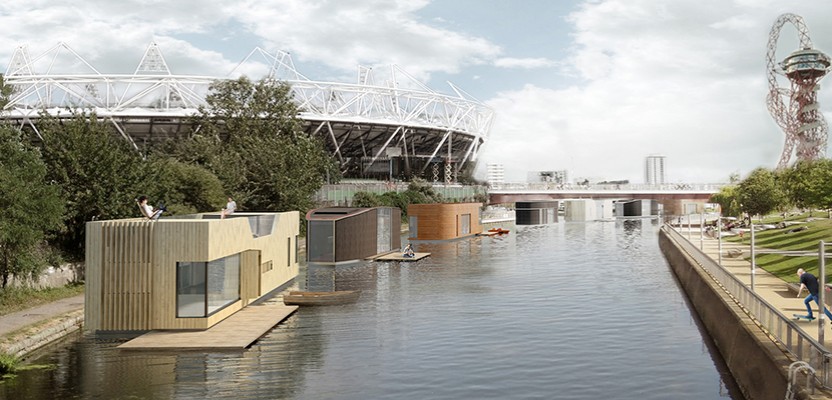From flats over fire stations to starter homes floating on waterways, the 10 winning designs in the New London Architecture competition to find solutions to London's housing shortage couldn't possibly be more diverse and more ambitious. The ideas competition, which launched in June 2015, invited anyone to submit an idea that would help to improve the speed, scale and quality of housing supply. It was launched by the New London Architecture (NLA) think-tank, which invited entries from around the world to offer solutions to London's housing shortfall, and from an initial shortlist of 100 designs, 10 finalists were selected last week.

Wood Blocks by the London-based studio dRMM Architects, allows self-builders to fit out their own interiors within a thermally and acoustically insulated shell. Excluding internal fit-outs could reduce the cost (to the developer/house-builder) of building new homes by 40 per cent, and the duration of construction by 25 per cent – delivering faster, cheaper housing.

The Urban Darning project by Patrick Massey is an infill housing project aiming to make use of gaps in the existing urban sprawl. The small residential developments would be carried out by architects and planners appointed by each individual London borough. The idea is that Attaching a set of approved schematic drawings to a site will significantly reduce the risk of not obtaining planning permission, as the site has already effectively had an outline planning analysis, and will therefore act as a catalyst for development.
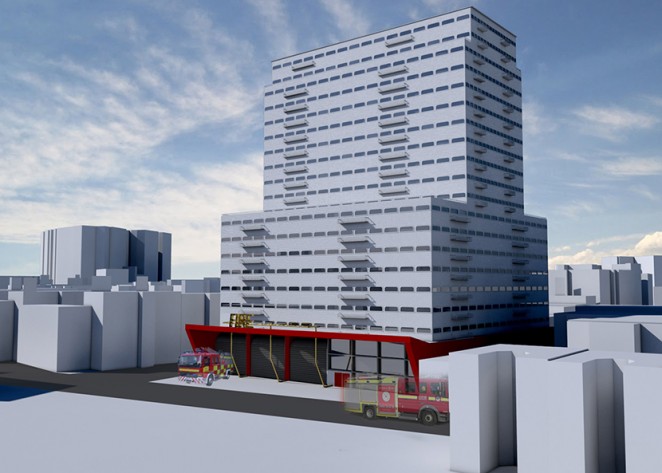
Bill Price's Housing over Public Assets projects estimates room for 630,000 new homes built above libraries, hospitals, schools and fire stations. The scheme would involve public buildings being rebuilt by private sector companies in projects funded by the rental of the apartments above. This project would comfortably meet the projected 488,000 homes that will be needed in the capital in the next decade whilst simultaneously improving public facilities.

The floating house concept by Baca Architects, who worked with the company Floating Homes on Buoyant Starts, is a prefabricated housing model for first time buyers on stretches of disused water across London. It's estimated that this model could provide 7,500 starter homes on the city's 50 miles of rivers and canals, as well as on the 150 hectares of water space in the city's basins, marinas and docks.
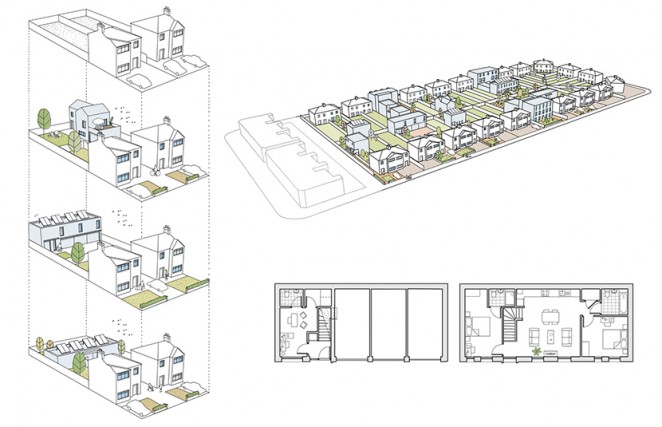
The back gardens of suburban housing have been given a dramatic overhaul in Supurbia, an infill housing solution by UK design consultancy HTA Design. The strategy here will bring together local authorities and communities to plan appropriate developments, and allow homeowners to release equity in their land for home improvements. It will also reduce reliance on mainstream developers to ease the housing crisis, providing an approach that is more adaptable to communities’ needs.
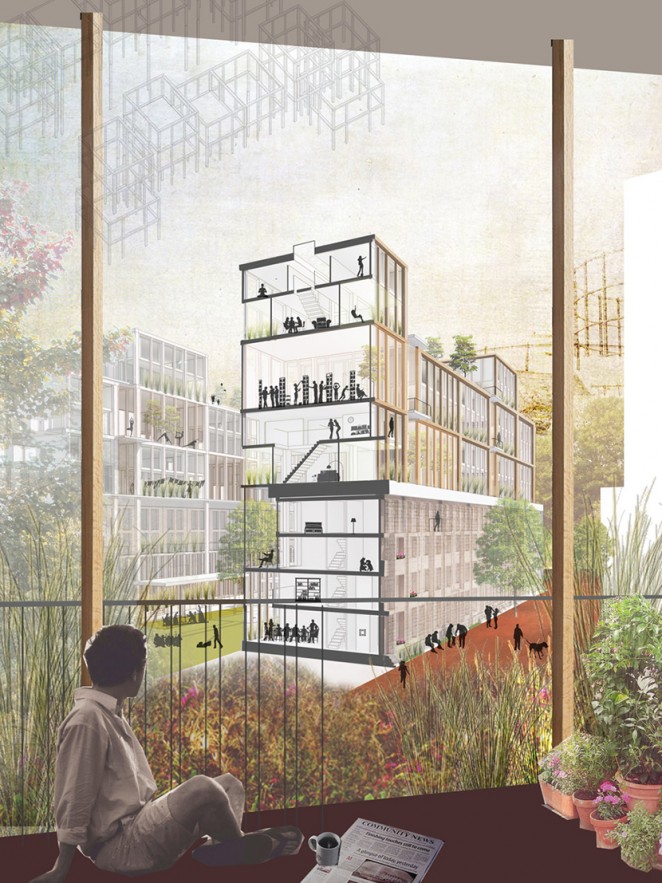
London-based studio Natasha Reid Design proposes pooling gardens and creating communal living spaces in a cloistered housing system called Intimate Infrastructures. This is an alternative to more dominant forms of volume housebuilding is proposed, which provides solutions for both private renters in the form of purpose built shared homes, as well as considering the needs of local communities vulnerable to displacement.
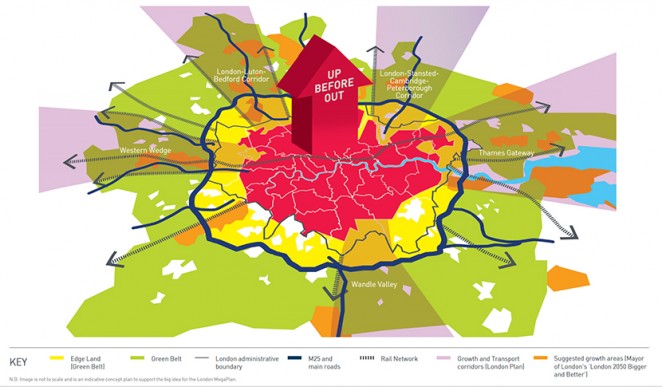
Property consultants GL Hearn plan for urban development post 2050 when London is set to become Europe's first so-called mega city, with a population exceeding 10 million. Mega Planning Beyond 2050 – MegaPlan for a MegaCity makes use of Green Belt land within the M25 motorway that surrounds the capital. This approach would be underpinned by a strategic Green Belt review, to positively plan for a sustainable pattern of growth.
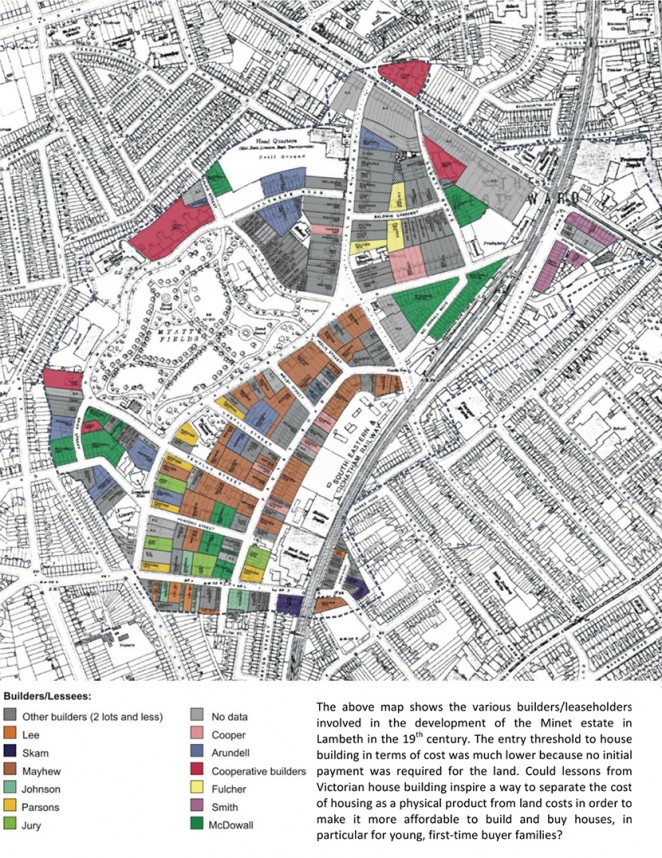
Separating the cost of land purchase from house construction by adopting a leasehold system, Investing in London's Future by Learning from its Past by David Kroll aims to ward off private developers and keep land under public ownership. Those who purchase the dwellings would then pay an additional, stable ‘ground rent’ for the land. The level of such a rent can be set strategically and with social sustainability in mind. The ground rent could be smaller, for example, for young families who are first-time buyers.

Public transport routes to hard-to-reach areas of London are improved in the ATAL Opportunity Areas project by The ATAL (Active Transport Accessibility Level) team in an attempt to unlock these areas of the city for development, bringing affordable housing to previously tricky to reach areas. The idea is to shift the focus from ‘transport accessibility’ to ‘active transport’ and improve accessibility from these parts of London to enable a higher yet moderate housing density to unlock new supply.

Finally, council-owned sites have been redeveloped in Making More with Less: Unlocking Leftover Land for Generation Rent, with not-for-profit housing provider Naked House as developer. Making use of small infill sites across the city, the scheme claims to be able to provide as many as 110,000 affordable homes by 2025.
All of the winners will be invited to participate in a Greater London Authority working group to explore how their ideas could be developed to deliver future housing for the capital. Initially, a shortlist of 100 designed was drawn up from the 200 international entries last month. The 100 projects on the shortlist (including the 10 finalists) will be on show at The Building Centre in London between October 15 and December 17.

